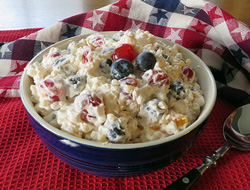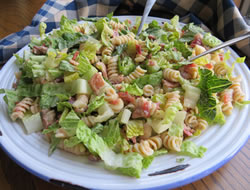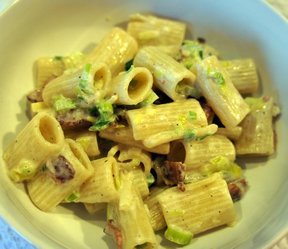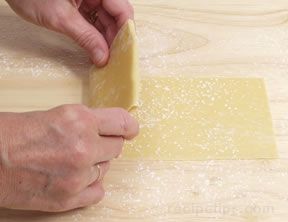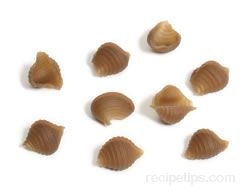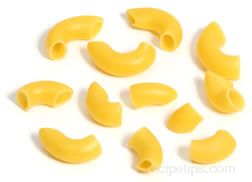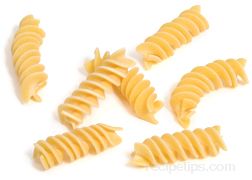When serving pasta with sauce a general rule for pairing the sauce with the pasta is to serve the smaller more delicate pastas with smooth, light sauces that don't overpower the pasta and serve the larger, thicker pastas with heartier, more chunky sauces that are thicker in texture. While spaghetti can be paired with almost any type of sauce, strand pastas that are thin such as angel hair, barbina, capellini, fedelini, linguine, and vermicelli are best suited for the lighter sauces such as a clam, garlic and oil, or a tomato sauce. Alfredo or carbonara sauce goes well with some of the thicker ribbon pastas, such as ciriole, fettucelle, fettuccine, tagliatelle, tagliolini, taglierini, or spaghettioni, which can take the thicker cream or tomato sauces. The tubular varieties of pasta such as bocconcini, canneroni, elicidali, maccheroni, penne, pennoni, rigatoni, rigatoncini, trenne, tufoli, ziti, and zitoni are best suited for the hearty, chunkier types of sauces such as meat ragu, thick cream sauces, heavier tomato sauces, or pasta dishes made with cheese.
When preparing pasta, typically a pound of dried pasta will equal a pound and a quarter to a pound and a half of fresh pasta. To enhance the flavor of the pasta, add a tablespoon of salt for each pound of pasta being placed in water to boil. When cooking pasta in water, bring the water to a rapid boil, stir the pasta periodically, reduce the heat, drain the water away from the pasta and mix it with sauce immediately. Do not rinse pasta as it will only serve to remove the starch that keeps the pasta sauce on the pasta and the flavor in the pasta.
When buying pasta, the names of the pasta are basically Italian so there are some common aspects that will generally apply to most varieties. As an example, "rigate" or "rigati" indicates the pasta is ridged rather than smooth, such as ziti that is smooth tube pasta or ziti rigati that has a ridged outer surface. If the pasta has a suffix ending in "i", "ini" or "oni" it typically refers to a different sized version of the pasta. Pastas ending in "i" are the medium size versions. Those ending in "ini" are the smallest or thinnest versions while those ending in "oni" tend to be the largest or thicker versions. As an example, rigatini is thinner than rigatoni. Similarly, vermicellini is the thinnest, vermicelli is thicker, and vermicelloni is the thickest of the three sizes. Also, if a pasta has a suffix of "ette" or "etti", it is an indication that it is a smaller version of another pasta.







